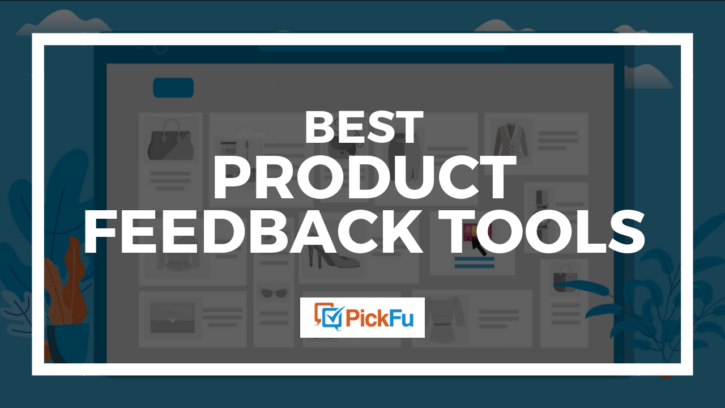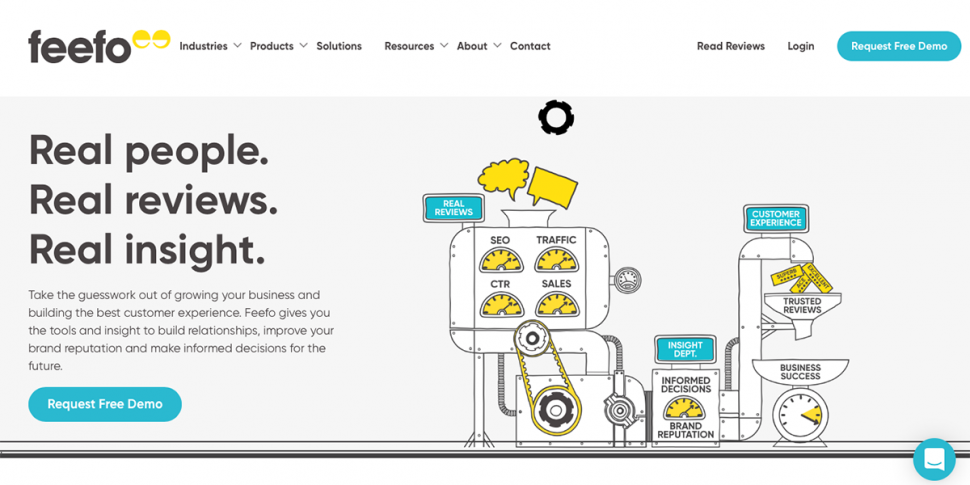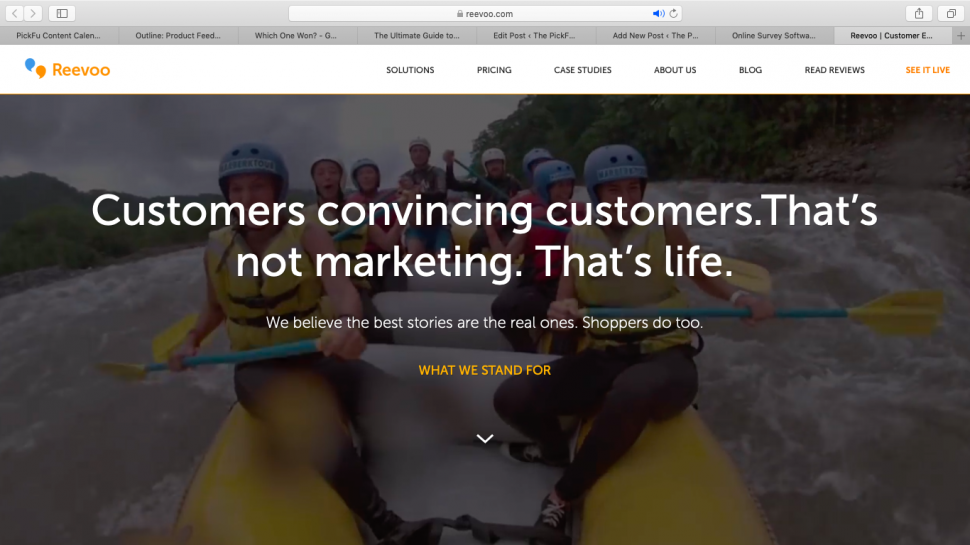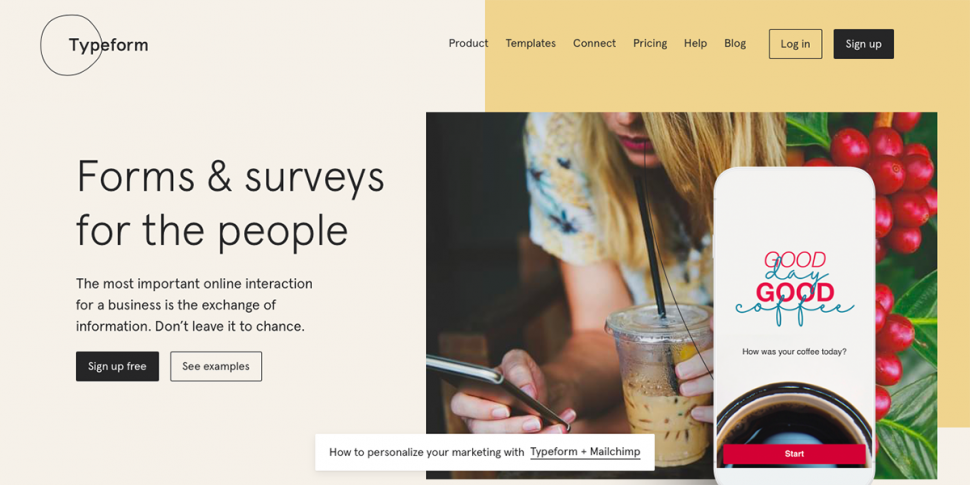Getting products listed on your e-commerce website is only the beginning of the sales cycle. Once customers purchase from you, it’s important to gather information from them using product feedback tools.
But how should you get as many online reviews and as much feedback from your customers as possible, without chasing each one of them down with a ton of emails back and forth? That’s where product feedback tools come in. We’re going to take a look at two types of tools that will do the heavy lifting for you: online reviews and customer surveys.
Streamlining your process with product feedback tools will create exponential growth for your business and ultimately lead to more sales.
Why are online reviews so important?
Customers have more choices for shopping online than ever, no matter what kind of product they’re looking for. With so many options at their literal fingertips, customers diligently research to find their best option, and reading reviews is often the biggest part of that research.
Having plenty of online reviews is important because it creates social proof. As hesitant customers read positive reviews, they gain confidence in your products from the praise of fellow shoppers.
You can take that confidence one step further and turn it into trust by being responsive to the reviews. If you respond to both positive and negative reviews in a timely manner, shoppers will notice your careful attention and begin to trust your brand.
Reviews often answer questions that potential customers have about your products. If there is a specific detail missing from your product description, customers will turn to the reviews for answers.
Possibly best of all, having a constant stream of new reviews improves your SEO ranking. The more people are talking about your product and creating additional content around it, the higher you will rank in the search engines – which ultimately leads to more sales, completing the sales cycle.
Three product feedback tools for online reviews
Product feedback tool #1: Trustpilot
Trustpilot is a review website that is free for customers to use and offers a host of free features for businesses, with the option of upgrading to paid services. With more than a million new reviews posted each month, Trustpilot is a popular platform and a strong place to start.
Benefits
Trustpilot has made it difficult to leave fake reviews, keeping the platform trustworthy. The interface is easy for both customers and businesses to use, plus there are plenty of additional features such as integrating with Facebook reviews and offering analytics.
Disadvantages
Business users have complained that Trustpilot’s customer support could be better, with long wait times for responses and canned responses when they do hear back.
Recommendation
Since Trustpilot is such a popular and well-honed review tool, it’s an essential tool to start with. Master Trustpilot first before moving on to other tools.
Product feedback tool #2: Feefo
Feefo easily integrates with major e-commerce websites like WooCommerce, BigCommerce, and Shopify. After someone has purchased one of your products, Feefo sends an automated message reminding them to leave a review.
Benefits
Since Feefo is essentially all automated, a huge perk is the ease of use for businesses. Feefo also includes in-depth analytics, the option to customize your review invitations, and the ability to create a portfolio of reviews from customers.
Disadvantages
Feefo doesn’t list pricing on its website, as packages are tailored to each business. While this customization means you should end up paying for only what you need, it does make it difficult to get an idea of what you might pay until you reach out to the sales team.
Recommendation
While customer reviews are never totally a ‘set it and forget it’ kind of thing, Feefo does give you a bit of that feel. It’s an especially recommended tool for solo business owners or anyone with a big to-do list who needs their review tool to work seamlessly.
Product feedback tool #3: ReeVoo
Sporting some big-name clients such as Hyundai and Whirlpool, ReeVoo gathers not just reviews, but the stories and images your customers share online. ReeVoo emphasizes the idea of connecting brands with their customers, which in turn creates significant brand loyalty.
Benefits
When contacting customers, ReeVoo digs deeper than other review tools by asking about the purchase process and the service customers received. ReeVoo is also vigilant about collecting authentic feedback only, publishing both positive and negative reviews.
Disadvantages
ReeVoo is designed for medium to large businesses, so if you’re running a one-person e-commerce show, this may not be the solution for you. There’s also no free trial available, so you would have to jump right into ReeVoo from the beginning.
Recommendation
If you’ve been running your e-commerce business for a while, already have employees, and want to scale up even further, ReeVoo is the way to go. There’s a sophistication to this review tool that can help you build your brand name.
Why are customer surveys important?
While customer reviews are useful externally for potential customers to see, customers surveys are useful internally for improving your product and growing the business. If you’re not already taking advantage of customer surveys, it’s time for you to start.
Surveys help gather aggregated feedback from your customers and assess how they’re reacting to your products. You’ll never get every single customer to leave feedback, but with the right tools in place, you can get feedback from more of them.
Once you’re receiving feedback from customers, you can make improvements based on what they’re saying. Perhaps you need to tweak your products, make changes to your online shop, or even pivot the direction of your business.
Customer surveys can also help you keep up with the tastes of your customers. As trends come and go, you can keep your finger on the pulse with the information they give you. Stay one step ahead of future customers by tapping into the feedback of previous customers.
Another benefit of sending out customer surveys is helping your customers feel like their opinion matters. When they get to send feedback, positive or negative, they feel like they’re part of your decision-making process. Collecting and using their feedback creates a community with your customers, making them feel invested in your success because they’re a part of the process.
Three product feedback tools for customer surveys
Product feedback tool #1: Typeform
You can build all kinds of surveys and forms with Typeform, and build them beautifully. Typeform is known for being aesthetically pleasing and intuitive, both in building surveys as a business and using them as a customer. Typeform emphasizes the importance of online interactions and exchanging information for the greater good.
Benefits
Typeform is easy to build and customize so it can match your brand identity without needing a professional designer. The surveys are responsive, which means they’ll look professional and function on any device your customer is using. You can embed your survey on your website, or send it out through email or even social media.
Disadvantages
While you can embed your survey on your website, it will clearly look embedded rather than being native to the page. There are also many extra features available with Typeform, but most of them require a paid plan.
Recommendation
If your e-commerce brand values graphic design in any way, Typeform is the survey tool to go with because it looks good, period. Typeform is also easy to use, so it’s an easy choice if your customers are not entirely computer savvy.
Product feedback tool #2: SurveyMonkey
SurveyMonkey was one of the first big names in online surveys. Its surveys and forms focus on being functional instead of flashy, and they work well. Chances are high that your customers have completed a survey with SurveyMonkey before, so the format will feel familiar.
Benefits
While building your survey with drag-and-drop options, SurveyMonkey shows you a live preview of your form. There’s also a library full of integrations you can add, including tools for analytics and reporting.
Recommendation
With a long history and a solid reputation behind it, SurveyMonkey is perfect for an e-commerce business that wants to do customer surveys the right way. The additional integration options make it an effective tool for businesses who may want to get even more information from their customers. If you’re interested in SurveyMonkey alternatives, check out the linked article!
Product feedback tool #3: Alchemer (formerly SurveyGizmo)
Alchemer, formerly SurveyGizmo, has created a good balance of being easy to design and having an abundance of features. You can easily create survey and other kinds of forms, like quizzes, assessments, and even performance reviews.
Benefits
Alchemer offers integration with other major online tools such as Salesforce, Microsoft Dynamics, and HubSpot. There is also a range of security tools in place, like secure links and encryption to protect the information of you and your customers, plus you can add password protection and ReCaptcha.
Disadvantages
If you’re new to using online surveys for your business, the range of features offered by Alchemer can be overwhelming. You may not want to use this tool unless you’re confident in what you’re doing.
Recommendation
Alchemer is a popular survey tool for those who have had experience with surveys before, or for the business that wants to take its surveys to the next level with extra features.
Using PickFu to get feedback before selling
The product feedback tools above are effective solutions if you’re already selling your product and have an existing customer base. But if your e-commerce product hasn’t been widely used or you haven’t made it past the production stage yet, then PickFu is the perfect way to get feedback.
By polling a group of real people, PickFu acts like an online focus group before you go into production. You can gather feedback and make any changes to your products before committing to inventory.
Thanks to the simple voting system of PickFu polls, you can see which products or designs are more popular. After voting, every respondent leaves written feedback as well, so you get details on what they liked or didn’t like about your product. Use PickFu polls to test out product ideas, designs, business names, product photos, and more.








